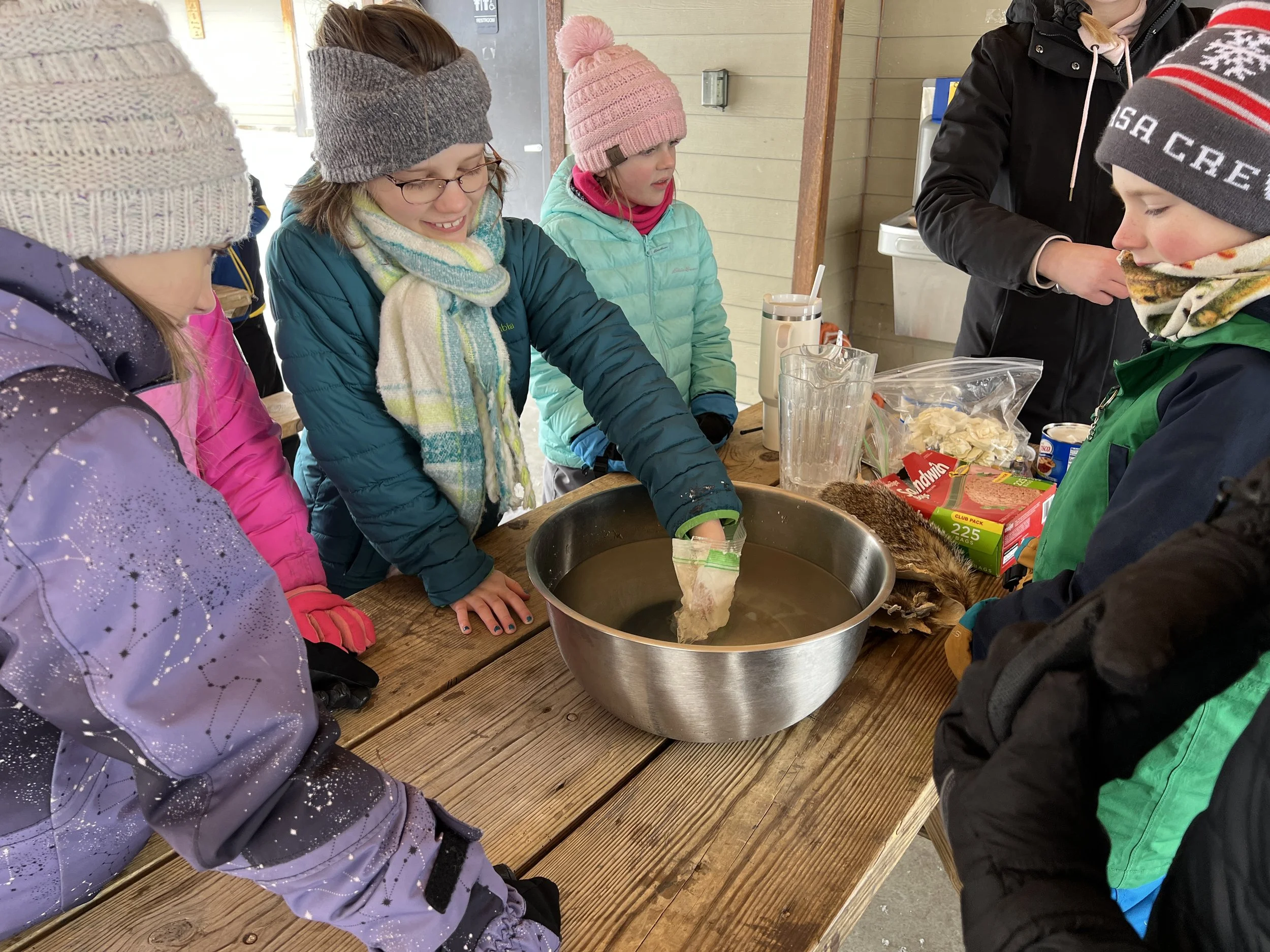theme 1 - Winter Survival: Animals & Birds
For our first afternoon together, we celebrated Groundhog Day! But first, to get to know everyone, we had a “snowball” fight under the pavilion. Ms. Paige asked us what animal we would want as our sidekick in life. We wrote our answers on a piece of paper, crumpled them up, and threw them back and forth at each other for a couple minutes until everyone had one. Next, we opened them up one by one, read the animal out loud, and the person who wrote it introduced themselves and explained why they chose that animal. We had some great conversations and learned a lot about each other!
We also learned about Groundhog Day. The holiday originated in Germany, where they celebrated badgers and hedgehogs emerging from their dens when winter weather began turning to spring. When people from Germany came to America and settled in Pennsylvania, there were no badgers or hedgehogs to be found, but there were plenty of groundhogs! This year, Punxsutawney Phil saw his shadow, which means six more weeks of winter; however, most of our group thinks his prediction will be wrong this year. After all, it’s a “HOAX!” (their words, not mine).
For our lesson, we discussed how animals and birds are able to survive winter. Some birds must migrate away because their food sources are frozen or snow covered (ex: robins), but some, like snowy owls, migrate here because our winters are more mild compared to the frigid arctic. We also discussed how animals tolerate the cold–thicker fur, lower heart rates, and/or by fattening up. For example, groundhogs’ heart rates slow from 80-100 beats per minute (bpm) to 4 or 5 bpm. Try putting two fingers on either side of your neck and counting how many pulses you feel in 60 seconds–is it more than 4 or 5 bpm?
Groundhogs hibernate, or sleep, through most of the winter (like bears), so they must also eat extra food to fatten up as the weather changes in the fall. We call this layer of fat “blubber.” It fuels and insulates the animals as they sleep. To see how it works, we tried a little experiment. We put vegetable shortening between two plastic baggies and put our hand inside like a glove. Then, we stuck that hand in a bowl of freezing cold water, but it did not feel cold! The vegetable shortening acted like a layer of fat, insulating our hand.
After everyone had a turn, we headed down Fox Den trail to show our new friends our favorite places, including Jack’s Creek, the Rock Beach, and the Bear Dens (no real bears found here). We found a cool disc-shaped ice formation above the Boardman River, so naturally, we threw snow and ice at it until it shattered. We enjoyed the sunshine and blue sky and even saw a few geese swimming in the river on the hike back to the pavilion.








